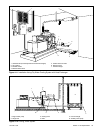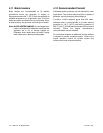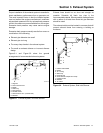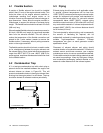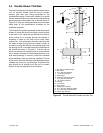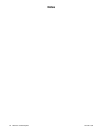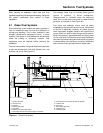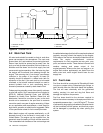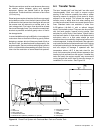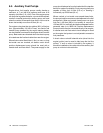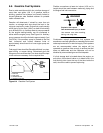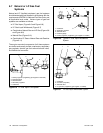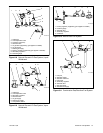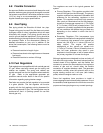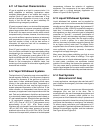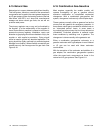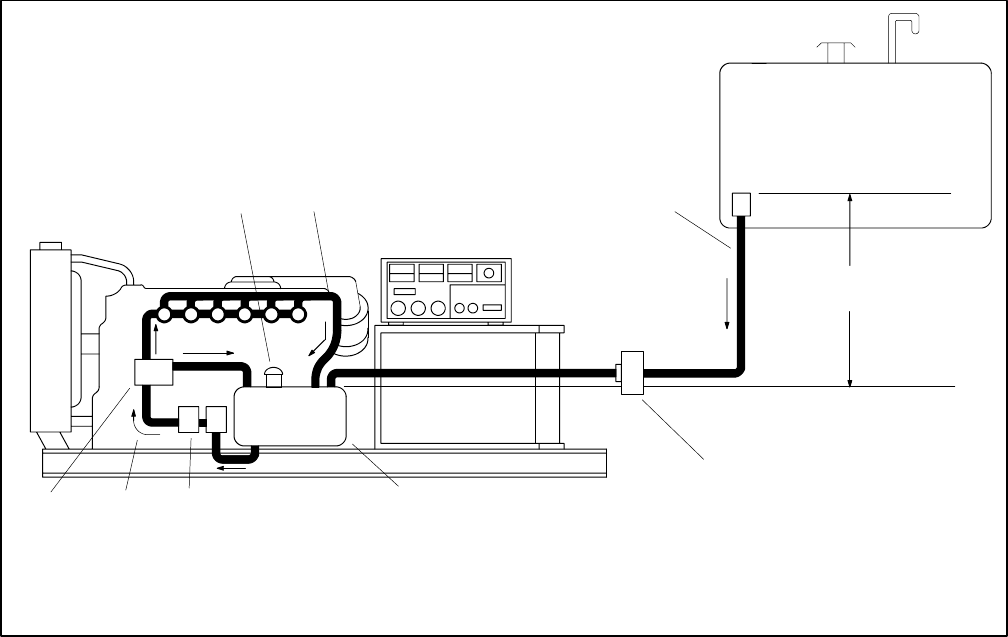
TP-5700 7/93 27Section 6 Fuel Systems
Flexible connections must be used wherever there may
be relative motion between piping and supplied
equipment. Always use flexible lines at the engine
connections. These should be a minimum of six inches
(15.3 cm) long.
Diesel engines require atleast two fuel lines: one supply
and at least one return from the fuel injectors. More fuel
is delivered to the injectors than the engine will use and
the excess must be returned to a transfer tank or the
main storage tank. Fuel return lines should be at least
the size of the supply lines. They shouldbe unrestricted,
as short as possible, and allow gravity return of fuel to
the storage tanks.
In some installations itmay be difficult orinconvenient to
route return lines so that fuel will flow by gravity. Before
designing a system which will have any head of fuel on
the return lines, the details should be approved by the
engine supplier. Serious problems with enginehydraulic
lock or uncontrollable overspeeding will result from any
return fuel line restriction on some diesel fuel systems.
6.4 Transfer Tanks
The term “transfer tank” and “day tank” are often used
interchangeably. Both are used to ensure engine
starting in the minimum possible time after a power
failure by means of a quantity of fuel stored in a tank
adjacent to the engine. This allows the engine fuel
transfer pump to easily draw fuel when starting and
provides a convenient locationto connect injector return
lines. Standard tanks are available in sizes from
5-275 gallons (19-1040 L) with or without integral
electric fuel transfer pumps. They can also be provided
with fuel level gauges, manual priming pumps, float
switches for pump control, float valves, rupture basins
and low level alarms. A float switch controlled solenoid
anti-siphon valve or a float valve should be used
whenever there is a possibility of siphoning fuel fromthe
main storagetank, orwhen the fuel levelin the maintank
may be abovethe levelof the transfertank inlet.Engines
are subject to derating for fueltemperature above 100°F
and are subject to damage if operated with fuel
temperature above 140°F. A day tank sized for two
hours fuel consumption should prevent excessive fuel
heating by fuel returned from the engine. If smaller day
tanks are used, the engine supplier may recommend
routing engine fuel return lines to the main storage, or
installation of a fuel cooler. See Figure 6-3.
1
2
3
4
5
6
7
8
910
1. Vent
2. Return line
3. Main supply line
4. Overhead main tank
5. Maximum 25 ft. (762 cm), minimum 1 in. (31 cm)
6. Fuel shutoff solenoid
7. Transfer tank
8. Filter
9. Flexible line
10. Fuel pump
Figure 6-3 Diesel Fuel System with Overhead Main Tank and Transfer Tank



